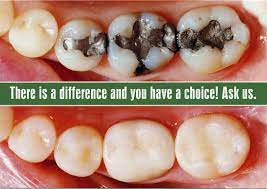Dental Fillings

Dr. Ankit Gupta
Last updated: Aug 18, 2023

Understanding Dental Fillings and Their Materials
Dental fillings are substances, often composed of various materials such as metals, plastics, and glass, that are used to repair or restore teeth. They are commonly employed to address cavities resulting from decay, cracked or broken teeth, and teeth that have been worn down due to misuse like nail-biting or teeth grinding.
Materials Used in Dental Fillings:
- Gold: Known for its longevity, gold fillings can last around 10 to 15 years. They are aesthetically pleasing to some and often chosen for their appearance.
- Porcelain: Porcelain fillings can endure for over 15 years and are more resistant to staining compared to composite resin.
- Silver Amalgam: Comprising mercury, silver, tin, zinc, and copper, silver amalgam fillings can last 10 to 15 years and are less expensive than composite fillings.
- Tooth-Colored Composite Resin: These fillings can be matched closely to your existing tooth color. They bond to the tooth, providing added support, and require less removal of the tooth compared to amalgam fillings.
- Ceramics/Porcelain: These fillings are highly durable, lasting more than 15 years, and exhibit greater stain resistance than composite resin.
- Glass Ionomer: Primarily used for fillings below the gum line, glass ionomer fillings release fluoride that aids in preventing further tooth decay.
Advantages and Disadvantages:
Advantages:
- Gold: Long-lasting, potentially appealing in appearance.
- Silver Amalgam: Durable, cost-effective.
- Tooth-Colored Composite Resin: Aesthetic, bonds for added support.
- Ceramics/Porcelain: Durable, resistant to staining.
- Glass Ionomer: Releases fluoride, suitable for below gum line.
Disadvantages:
- Gold: Costlier, potentially requires multiple visits.
- Silver Amalgam: Might necessitate more tooth removal, may create a grayish hue, higher risk of tooth cracks.
- Tooth-Colored Composite Resin: Shorter lifespan, may chip, higher cost, more time-intensive.
- Ceramics/Porcelain: Can be costly.
- Glass Ionomer: Weaker, more prone to wear, short lifespan.
The choice of filling material depends on factors like the extent of decay, location, cost, insurance coverage, and your dentist's recommendation. Consulting with dental professionals, like our esteemed dentists in Noida Sector-12, can help determine the most suitable type of filling for your dental needs.
Other Treatments
Follow Us for Smiles!
Treatments
Patient Information
© 2025. All rights reserved.
